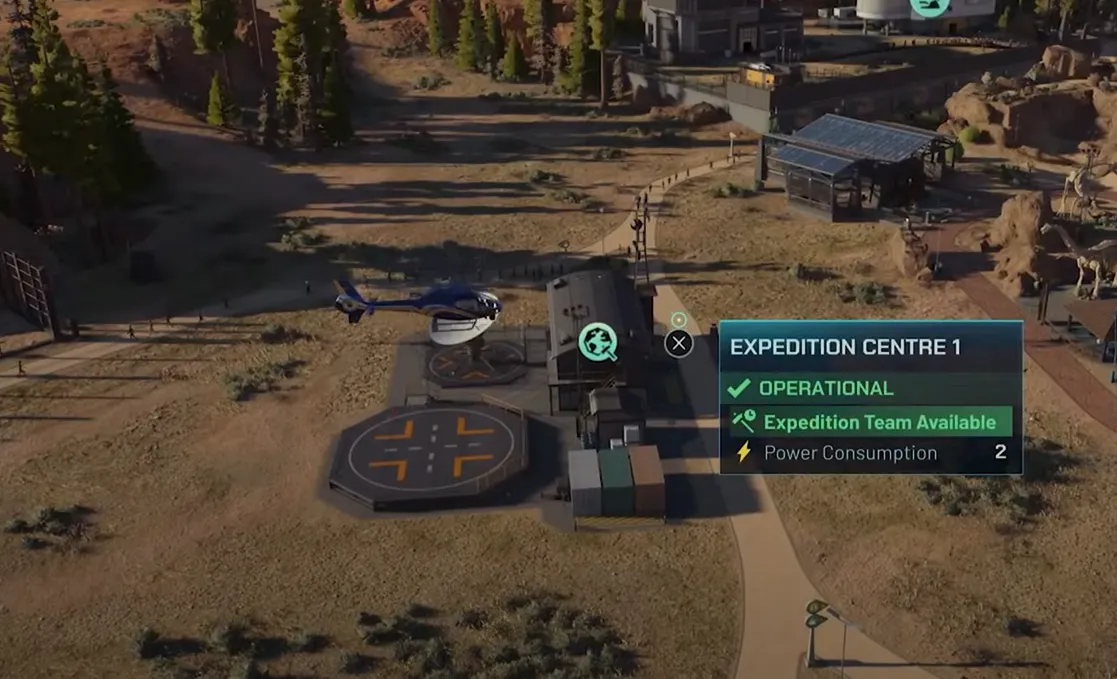Expeditions are the backbone of your dinosaur roster in Jurassic World Evolution 3. They send scientists to dig sites, bring back fossils and valuables, and unlock the genetic data you need to incubate new species. Here’s how to set up your park for successful digs, run efficient teams, and see exactly what each dig site unlocks.
Set up the Expedition Center (power, staffing, workflow)
Build an Expedition Center first. It costs $75,000 and draws two units of power, so place it within range of a Backup Generator or a Substation connected to a Power Station. Keep uptime steady with a Maintenance Facility and a Maintenance Post near the Expedition Center and your power source, and assign a Maintenance Team to that post.
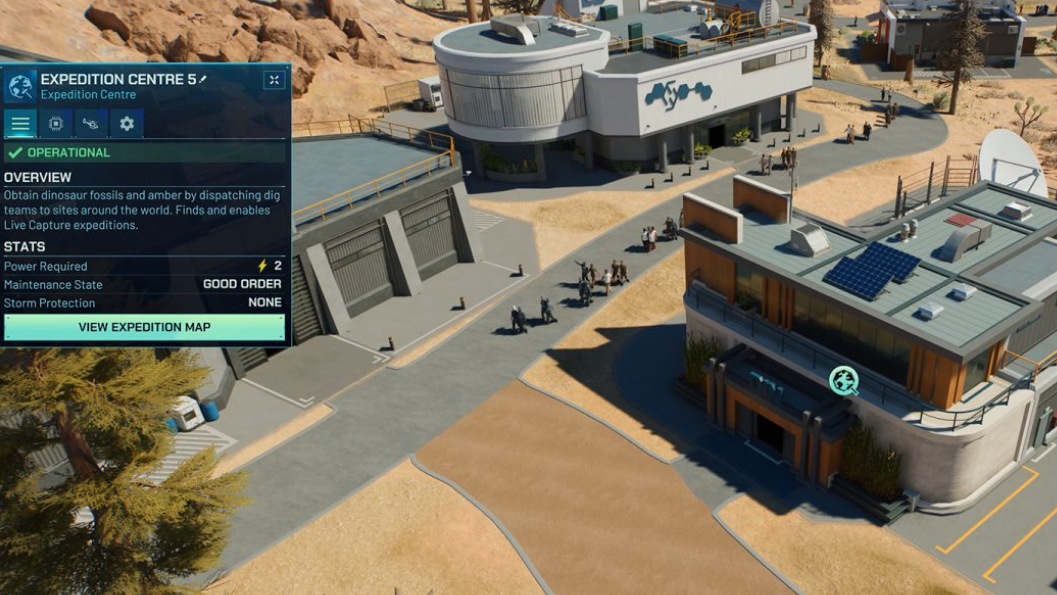
Hire scientists by constructing a Staff Center ($45,000). This is where you recruit and train staff, raising their skills so fewer scientists are needed per task. You’ll also need a Science Center for fossil processing. When expeditions return, this is where you extract genome data from fossils and sell any high-value minerals your team brought back. Extraction tasks require scientists with sufficient Genetics skill points.
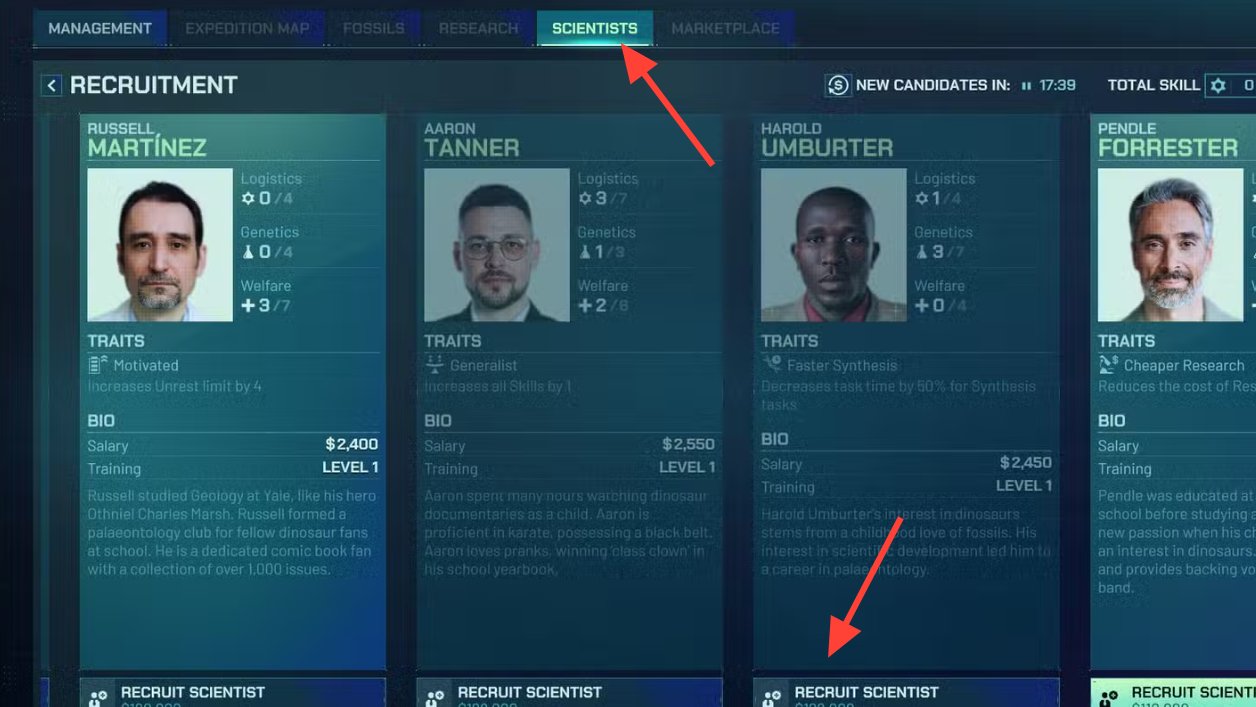
Send a dig team using the Expedition Map
You can launch expeditions directly from the Expedition Center or via the Expedition Map in the Control Room.
- Open the expedition interface and hover over a map marker to preview the species available, the expedition cost, and the required scientist skills.
- Assign a scientist (or team) that meets the requirements and start the task. Expeditions take time and money to complete.
- When the team returns, open the Science Center to extract DNA from the collected fossils and, if you wish, sell any valuables for cash.
Once you’ve reached 100% of the available genome at a dig site, its marker turns green, and you can’t visit it again.
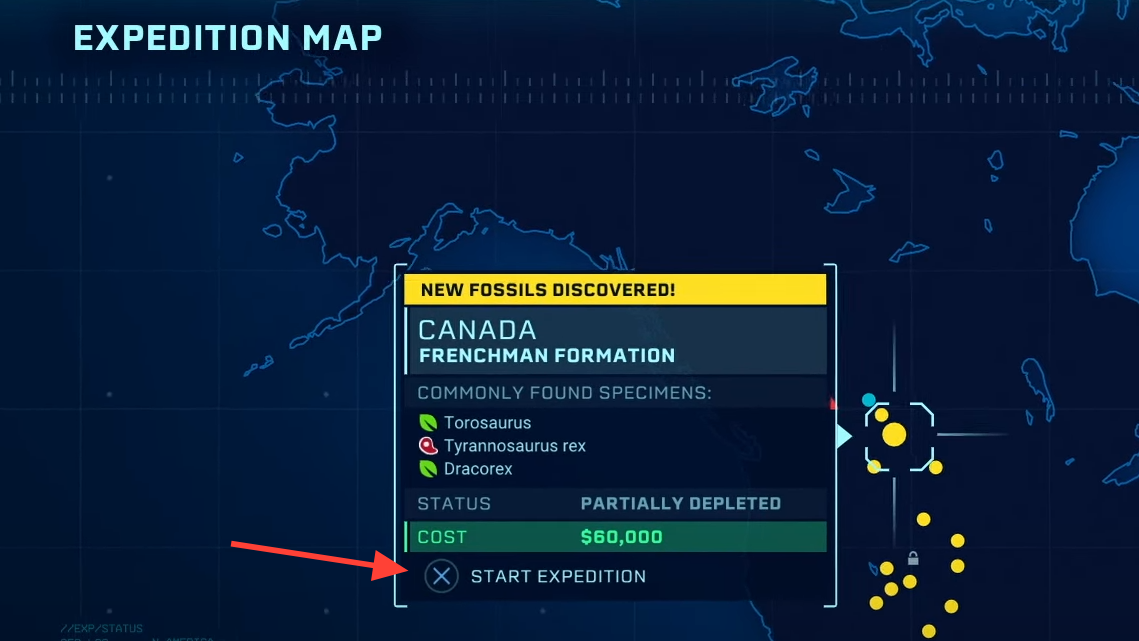
Use Expedition Center upgrades
The Expedition Center has upgrade slots that add targeted benefits. Options include faster yields, storm defense, and an extra scientist slot. These upgrades cost money to install, but they cut downtime, reduce risk, or raise output—useful when you’re pushing for specific genomes or operating during severe weather.
Unlock new dig sites across the campaign
Your initial expedition map includes a handful of sites. As you progress through parks around the world, more sites unlock, revealing additional dinosaurs and reptiles. Some categories unlock by reaching Security Reputation milestones. Use the table below to track where each set of dig sites comes online.
| Dig site category | Species available | Unlock requirement |
|---|---|---|
| Carnivores | Compsognathus, Dilophosaurus | Available at start |
| Herbivores | Edmontosaurus, Galimimus, Lystrosaurus | Available at start |
| Tiny Herbivores | Microceratus, Psittacosaurus, Protoceratops | Progress through Kauai, Hawaii |
| Small Herbivores 1 | Struthiomimus, Pachycephalosaurus, Ornithomimus | Progress through Kauai, Hawaii |
| Small Herbivores 2 | Homalocephale, Stygimoloch, Archaeornithominus, Dryosaurus | Progress through Kauai, Hawaii |
| Medium Herbivores 1 | Maiasaura, Corythosaurus | Progress through Kauai, Hawaii |
| Medium Herbivores 2 | Iguanadon, Olorotitan, Parasaurolophus, Muttaburrasaurus, Tsintausaurus | Progress through Kauai, Hawaii |
| Medium Herbivores 3 | Therizinosaurus | Progress through Sichuan Basin, China |
| Large Herbivores 1 | Aatosaurus, Brachiosaurus, Patagotitan | Progress through Sichuan Basin, China |
| Large Herbivores 2 | Diplodocus, Mamenchisaurus, Dreadnoughtus | Progress through Kauai, Hawaii |
| Armored Herbivores 1 | Ankylosaurus, Nodosaurus, Chungkingosaurus | Progress through Kauai, Hawaii |
| Armored Herbivores 2 | Nasutoceratops, Sinoceratops, Styracosaurus, Triceratops, Lokiceratops | Progress through Kauai, Hawaii |
| Armored Herbivores 3 | Stegosaurus, Chasmosaurus, Gigantspinosaurus, Sauropelta | Progress through The Azores Islands, Portugal |
| Piscivores | Spinosaurus, Baryonyx, Suchomimus | Progress through Katsuyama, Japan |
| Omnivores | Oviraptor | Progress through Kauai, Hawaii |
| Tiny Carnivores | Moros Intrepidus, Proceratosaurus | Security Reputation 15 |
| Small Carnivores 1 | Dimetrodon, Atrociraptor, Pyroraptor, Deinonychus | Progress through Katsuyama, Japan |
| Small Carnivores 2 | Guanlong, Herrerasaurus, Velociraptor, Coelophysis, Troodon | Progress through Kauai, Hawaii |
| Medium Carnivores 1 | Allosaurus, Ceratosaurus, Utahraptor, Metriacanthosaurus | Security Reputation 35 |
| Medium Carnivores 2 | Concavenator, Yutyrannus, Albertosaurus | Progress through Kauai, Hawaii |
| Large Carnivores | Gigantosaurus, Tyrannosaurus rex, Carnotaurus, Acrocanthosaurus, Qianzhousaurus | Security Reputation 55 |
| Marine Animals 1 | Ichthyosaurus, Plesiosaurus, Kronosaurus, Dunkleosteus | Progress through Kauai, Hawaii |
| Marine Animals 2 | Mosasaurus, Attenborosaurus, Megalodon | Progress through Sichuan Basin, China |
| Flying Reptiles 1 | Dimorphodon, Tapejara, Caiuajara | Progress through Clark County, Nevada |
| Flying Reptiles 2 | Pteranodon, Tropeognathus, Geosternbergia | Progress through Kauai, Hawaii |
| Flying Reptiles 3 | Quetzelcoatlus, Thanatosdrakon | Progress through Kauai, Hawaii |
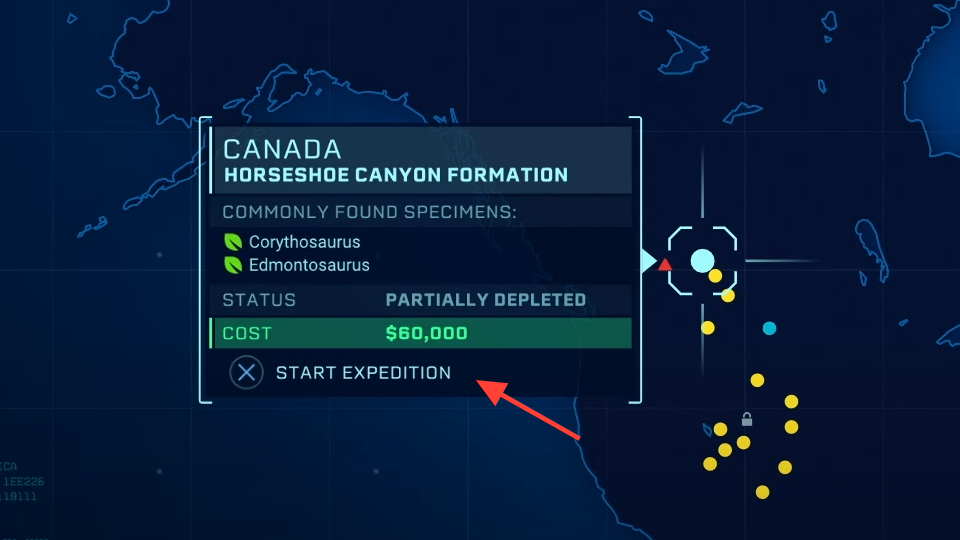
What to do when fossils return
Open the Science Center to process the haul from your expedition. Choose which fossils to extract DNA from and which valuables to sell. Extracting raises genome completeness for each species; once you’ve hit the thresholds you’re targeting, you can take that genome into your hatcheries to bring new animals into the park.
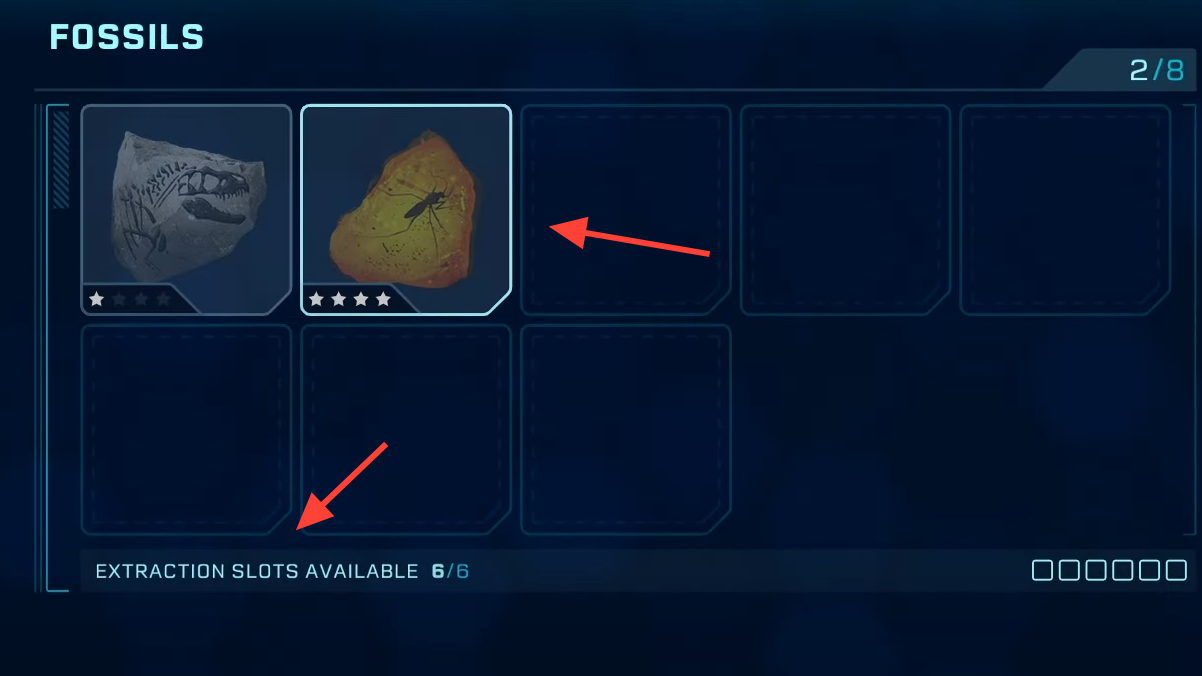
With the Expedition Center powered, staffed, and upgraded, your park’s expansion hinges on picking the right sites at the right time. Keep an eye on Security Reputation to open the carnivore tiers, push campaign progress for the regional unlocks, and don’t forget to monetize the minerals that come back with your fossils. That extra cash can fund the next dig before the helicopters even land.

